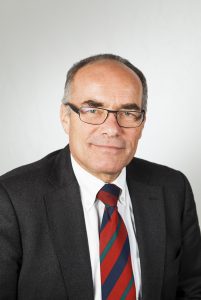Editorial
The last post-mining edition of Mining Report Glückauf (issue 3/2019) focused on the problem of water management at former mine sites. Here the main challenge was how to deal with the volume of water arising in various sectors of the extractive industry after the cessation of mining operations. In this latest edition we shall be turning our attention to the current situation in respect of mine water pumping and management in the former Ruhr coalfield.
The end of active coal mining in North Rhine-Westphalia in December 2018 signalled the start of a post-mining phase whose impact is set to be extensive rather than selective in nature. Here mine water management has now become an eternity task and RAG Aktiengesellschaft, as the former operating company responsible for the coal industry, was quick to respond to the challenge back in 2014 when it drew up a plan of operations that is now being implemented step by step. Department 6 of the relevant authority responsible for issuing the necessary licences and authorisations has now produced an initial interim assessment of the findings as they relate to the operating plans and water-law permits.
The RAG water management plan includes a provision whereby the number of water pumping stations will eventually be reduced from 13 to just six. Instead of the conventional method of underground pumps, which is the system currently in use, RAG plans to withdraw completely from the underground workings and thereafter to raise the mine water to the surface via a series of well pipes. Two different systems are currently used for these well-based operations, depending on the status of the shafts in question, namely the casing pipe method and the climbing formwork system. Both techniques are presented here along with their specific features.
This latest issue also takes a look over the border into Belgium, where coal mining ceased some time ago. Here the Mining Research Institute of the Catholic University of Leuven is addressing the question of how mining-induced residual subsidence differs from surface uplift caused by the flooding of abandoned mine workings. In Bochum/Germany, the Research Centre Post-Mining (FZN) at the TH Georg Agricola University (THGA), which is the only establishment of its kind in the world, is currently engaged in investigating the impact of the former mining industry and has developed an integrated approach for tackling the challenges of the post-mining era.
By “relaunching” the national raw materials strategy the Federal Government intends, from this year onwards, to address the current and foreseeable future challenges to security of raw materials supply to the German economy. The new strategy will for the first time also focus on aspects of the post-mining era.
As is customary, this second issue of the year also includes a review of developments in the national and global coal markets.
With my best regards
Dipl.-Ing. Andreas-Peter Sitte
Chief Editor Mining Report Glückauf, Essen
